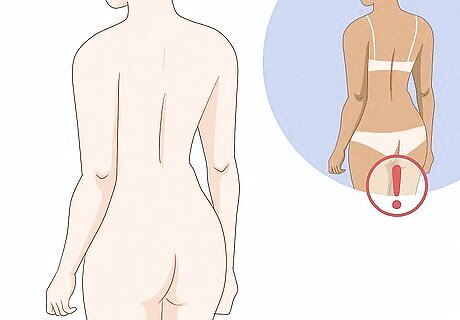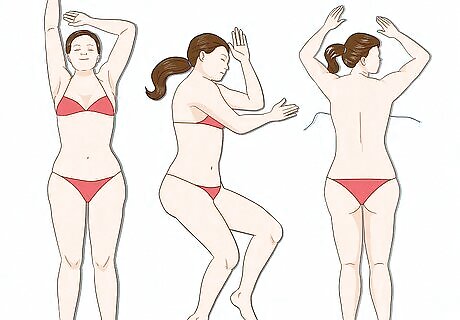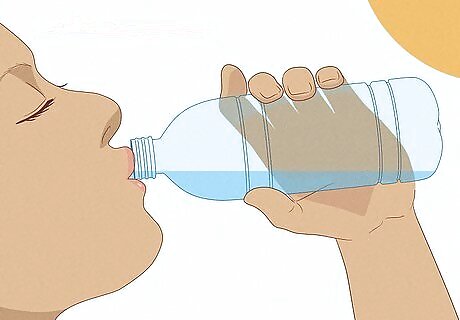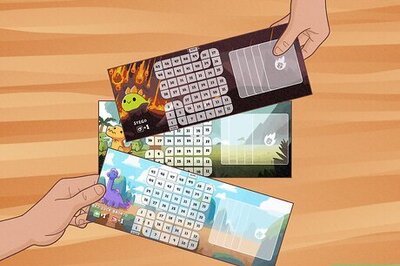
views
Fun in the Sun

Choose your UV source. For ultraviolet tanning, nothing beats good, old-fashioned sunshine. If your skies or weather don't permit, though, tanning beds are an effective, year-round alternative to keep your skin lightly browned. Keep it all in moderation—great looking skin can end up looking like leather if you stay in the "oven" too long.

Hydrate your skin. Skin that's well hydrated will tan better than dusty, dry skin. Before you do prepare your skin to tan well, do the following: In the shower, exfoliate dry, dead epidermal cells by scrubbing gently with a rough cloth, loofah, or exfoliating soap. Moisturize your skin with a lotion containing sodium PCA. It's a naturally-occurring component of human skin that helps maintain a healthy epidermis, and works by attracting moisture from the air. Apply the right level of sunscreen for your skin. If you have light skin, use a lotion with a higher SPF rating than if you have darker skin. No matter what your skin type or how much base you have built up, always use a sunscreen with at least an SPF rating of 15. If you are going to be in the water, make sure your sunscreen is waterproof, or re-apply when you're out of the water. Otherwise, re-apply sunscreen as directed on the label—usually every couple hours.

Wear sunscreen when you tan! If you are just going to sit on the beach and tan for an hour put SPF 4-15 on, depending on how fair your complexion is and how much base you've already built up. If you don't use sunscreen while tanning, UVA and UVB rays can still harm your skin, even if you don't get burned! Use lip balm with sunscreen as well. Ideally, apply your sunscreen in the shade, and let it soak in for 20-25 minutes before you go into the sun. Reapply as needed if you go swimming and the sunscreen is not waterproof, or every couple hours as directed on the label. If you notice redness developing on your skin, get out of the light—you're already burned, and continuing to bake will only deepen the burn and increase your risk of serious damage.

(Un)dress for success. Unless you want a patchwork quilt of tan lines, wear the swimsuit you will wear when you are swimming! Wearing the same swimsuit will give you a smooth, buttery tan that flows from skin to bathing suit. Skip the swimsuit altogether if you can. The only thing better than minimal tan lines is no tan lines at all!

Find your place in the sun. You can tan in your own backyard, at the beach, or anywhere that the sun shines. All you need is your tanning lotion, water, and a beach chair or towel. Position the chair or towel in the yard where the sun will hit you directly.

Move while you tan. Think "rotisserie chicken." To get that great, all-over browning, you have to keep on the move. Front, back, sides, and places where the sun doesn't normally shine—like underarms.Or spend one day on your backside and one day on your frontside If you don't want to lie around all day, but still want that tan, another alternative is to go for a jog, or even a walk. This not only increases your sun exposure and increases your tan but helps give you a slim, toned body at the same time. Nice!

Protect your eyes. They can be burned, too. For tanning, though, it's better to either wear a hat or just keep your eyes closed rather than wear sunglasses. Bright light on your optic nerve stimulates the hypothalamus gland, which in turn causes the production of melanin, thus achieving a deeper tan.

Hydrate! Make sure you drink plenty of water. Jump in the pool to cool yourself down now and then, too. Don't worry, this will not harm your tanning in the least. Don't forget to re-apply your sunscreen afterwards.

After you tan, moisturize. Use an aloe-based skin lotion to sooth and moisturize your skin. It will help keep your skin healthy and will prevent it from becoming flaky and dry from the sun.
Rub In Your Tan

Skip the sun. If you're very fair, tend to burn easily, or want to minimize the health risks, sun tanning or UV tanning beds might be exactly the wrong choice. You won't know you're burning until after you're burned and the damage is already done.

Do it yourself. There are a variety of products from companies such as Neutrogena, L'Oreal, Victoria's Secret, and many more, that will give you a smooth, even tan. As per the instructions, apply the lotion or spray evenly, taking care to get all skin covered. The best lotions will be non comedogenic, which means it won't clog your pores. Unless you have unusually long arms or are exceedingly flexible, you'll want a friend to help you get your back covered. It's a good idea to use a scrub with exfoliating microbeads in it to remove the fake tanner from your skin afterwards. Exfoliate your skin after the treatment using a product that contains glycolic acid to help kind of facilitate the process.

Shed your inhibitions. Visit a tanning salon, and let them do an all-over tan. In just a few minutes, they'll professionally apply a tanning mist over your entire body.

Read the label. Before you plunk down your cash, read the various reviews available on both product and on service—watch out for spray-on tans that turn you orange.




















Comments
0 comment